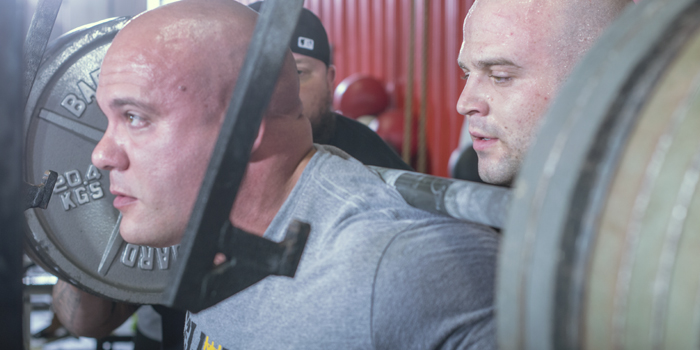
Finding the right squat for you can be the difference between a canceled competition and a gold medal. This was a real case with one guy I worked with, who had just qualified for his first national competition in powerlifting. Every time he tried to put on more weight in his squat, he got a sore lower back. That was the reason he called for my help. When I saw him do a squat in my gym, I could easily see that he was compensating for blocked hip movement with his lower back. He could do five reps with 180 kilograms before the pain took over. One month after I fixed his technique, he did 225 kilograms for two reps, and one month after that it was time for the nationals and he did 262.5 kilograms! He took a silver medal with his results. The year after, he squatted 300 kilograms, won a gold medal, and earned a spot in the national powerlifting team. If you have a poor squat, this is the article for you. I used to look at the weights a guy could pull in deadlift and compare to his squat. If there is a big difference, you will surely improve your squat after reading this article.
MORE: Jim Wendler Teaches the Squat Set-Up
There is no squat stance that suits everyone. All of us are individuals with different conditions, and our personal anatomy can differentiate more than you can imagine. Often the same squat is taught to everyone: your feet should stand shoulder-width with your toes directed forward and the knee never passing the foot. If you can’t squat like that, you're often called "too stiff" or "too stupid", but that’s not true. I will try to explain several things that will help you set up the perfect squat:
1. Find your best anatomic position.
2. Develop more power.
3. Minimize the risk of injuries.
4. Increase your recovery.
You can easily compensate for some issues by placing a pair of weight plates below the heels or by buying a pair of expensive weightlifting shoes with a heel. What happens when you do this is that the entire structure dips forward, which puts the pelvis in another position and liberates more mobility. In fact, you may be too stiff in the movement because you try to squat in a position that does not fit the way your pelvis is built. Different pelvic positions explain why some want to point out their toes while others don’t. It explains to some extent why some lifters are good at Olympic squats and pistol squats, while others are more functional when they squat with a wide foot stance.
I remember a guy who was competing in strongman. He contacted me because his knees hurt when he trained. He showed up at the wrong time and was one hour early for our meeting. So, I suggested that he use our gym and do his training in the meantime so he could get the night off after the treatment I would give him. He started to do squats. When I saw his squat I immediately corrected him; it took about three minutes to set up a good squat position for him. Then I went back to my other client who was scheduled before him. When I was ready to see him, he told me that he had broken his old squat record. He said it felt really easy with the new technique, and do you know what the best part was? His knees didn’t hurt! He fixed his own problem by changing his squat position to what suits his pelvis and hip joints better, and he didn’t have to compensate anymore. About a year after we met, he qualified for World's Strongest Man.
At the top of the pelvis is a hip joint where the ball of the femur moves inside the hip socket on the pelvis. Together, the hip joint and the ball is a movable joint to which the leg has to relate. Since this joint may differ in anatomical form in different people, the movement will also differ for different people. Some can sit deep down with the knees directed forward (which is ideal for weightlifting). Others need to keep their legs apart, to get maximum mobility in the joints (which generally fits the powerlifter better). Sure, the muscles that attach around the hip joint, the knee, and the ankle are also important, but we will not blame them for trying to take out a movement for which we are not anatomically adapted.
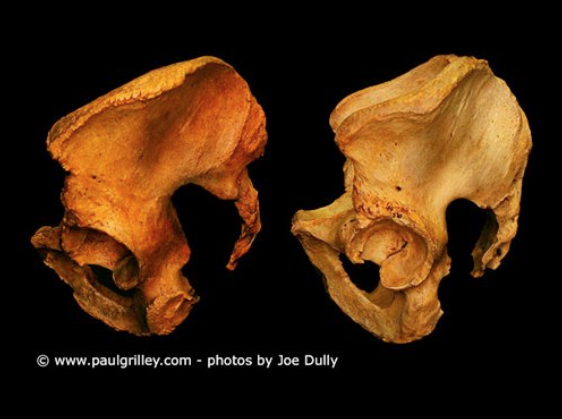
Look at the picture above. Notice how the socket in the pelvis points to different directions. On the pelvis to the left, the socket is directed more anteriorly (forward), while on the pelvis to the right the socket points laterally (aside). The likelihood that these two people could perform a similar knee bend is quite small, but the likelihood that they would try is great. Hopefully, with the information in this article, you will instead try to find the position and pelvic position that suits you.
The picture above represents the joints that are at the top of the femur. You see that the ledge to the left is directed straight in, which is why it matches the pelvis to the right better. The ledge ball to the right, however, is directed to fit the socket pointing obliquely forward. Which joints do you think are most suitable for pistol squats and narrow squats? Obviously, the one pointing forward will be easier to perform such a bend. If you try with the other attachment, it will probably feel tight and you'll have to fold the pelvis to make the move. The result is that you want an elevation below the heels and you will compensate the movement with the lumbar spine, as the abs may not be able to hold the hip.
There is therefore no one squat that fits all. Our hip conductors look different. One of my clients who works as an X-ray doctor in Sweden told me that they had hired a purchasing manager, who had previously worked in the automotive industry. He decided that they would only buy hip prosthesis from a factory in eastern Europe, as it was considerably cheaper. The orthopedists, who were very skilled, suddenly encountered problems with the operations. Usually, the blood spleen during an operation is about three deciliters. During these operations it rose to seven deciliters. Hip issues became more common after surgery. They had to start giving more restrictions for what they could and could not do. Swimming, for example, was completely excluded; it caused too much strain on the hip joint and it could easily luxuriate (go out).
This is not what you can say about my friend Ed Coan, a powerlifter from the United States. He has had two hip joint surgeries and now he can train with over 300 kilograms in his squats. Is he superhuman? Yes, he probably is. But there should not be such a big difference to people after surgery.
Above you see the same pelvis from the front. You may need a little zoom, but you can see that the hip joint sits differently on them. Again, the left allows a larger movement straight ahead than it does to the right. The right one prefers to take out the mobility in a lateral plane.
In this picture, I show an exercise that I think is good for finding which position of footing that allows you to get in a good position without falling over with your upper body. If you do not manage to open your hip, you will fall forward with your body and push yourself out from the wall. Start by standing a bit from the wall and working inwardly as you get more balanced and become more mobile in your body.
In this picture, I show during a seminar how to help your training partner see where they have the most mobility in the hip. In the position where the knee reaches the chest the most without lifting your butt, you’ll probably have your best squat position. Many who fall back a lot stand too narrow and need to open up. There are more factors to be considered, but this is a good start for finding a better squat position.
What is the conclusion to make after you read this article?
- Many people can make a huge improvement by correcting their technique.
- Technique is individual. There are about 7.5 billion people on this earth and every person has different conditions for squatting.
- Hip involvement is more important than hip mobility.
- If you use the right biomechanical movement pattern, it helps you. If you use the wrong biomechanical movement pattern, it breaks you.
- There are more things to put in after you learn this, but without this knowledge, the other stuff will be pretty useless by their own.
I hope you're satisfied with reading this article and will recommend it to others. If you want me to look at your squats or anything else please tag me on Instagram (@seminoff). I do my best to look at everything I’m tagged in. Finally, thank you Ed Coan and Hege Nielsen for your help with translating!
Stefan Waltersson is a professional strength coach certified by Westside Barbell, lecturer, physiotherapist, author, personal trainer, kinesiologist, sports massage therapist, nurse assistant and founder of Seminoff Sport & Rehab in 2004. Stefan has previously worked in neurology (Sahlgrenska University Hospital) and with researching doctors in microbiology and clinical chemistry. Check out his website: http://seminoff.se/.











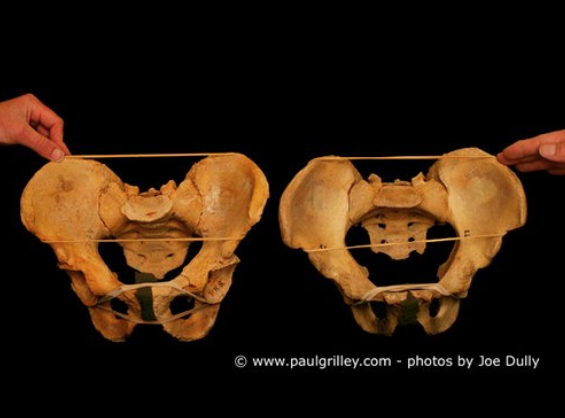
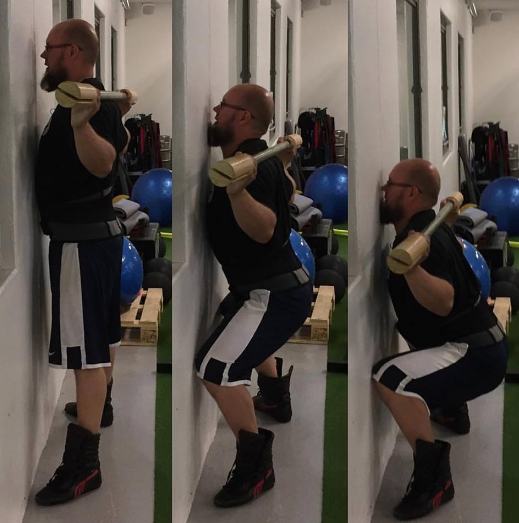
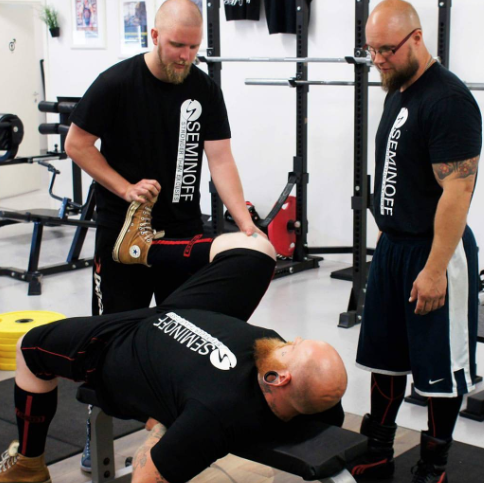
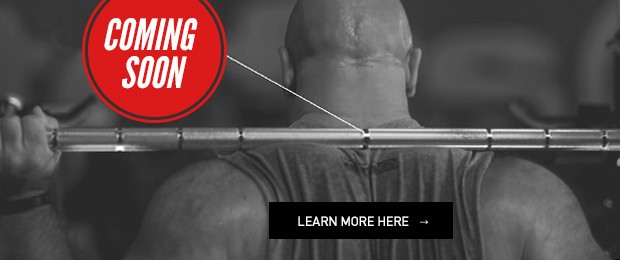
2 Comments